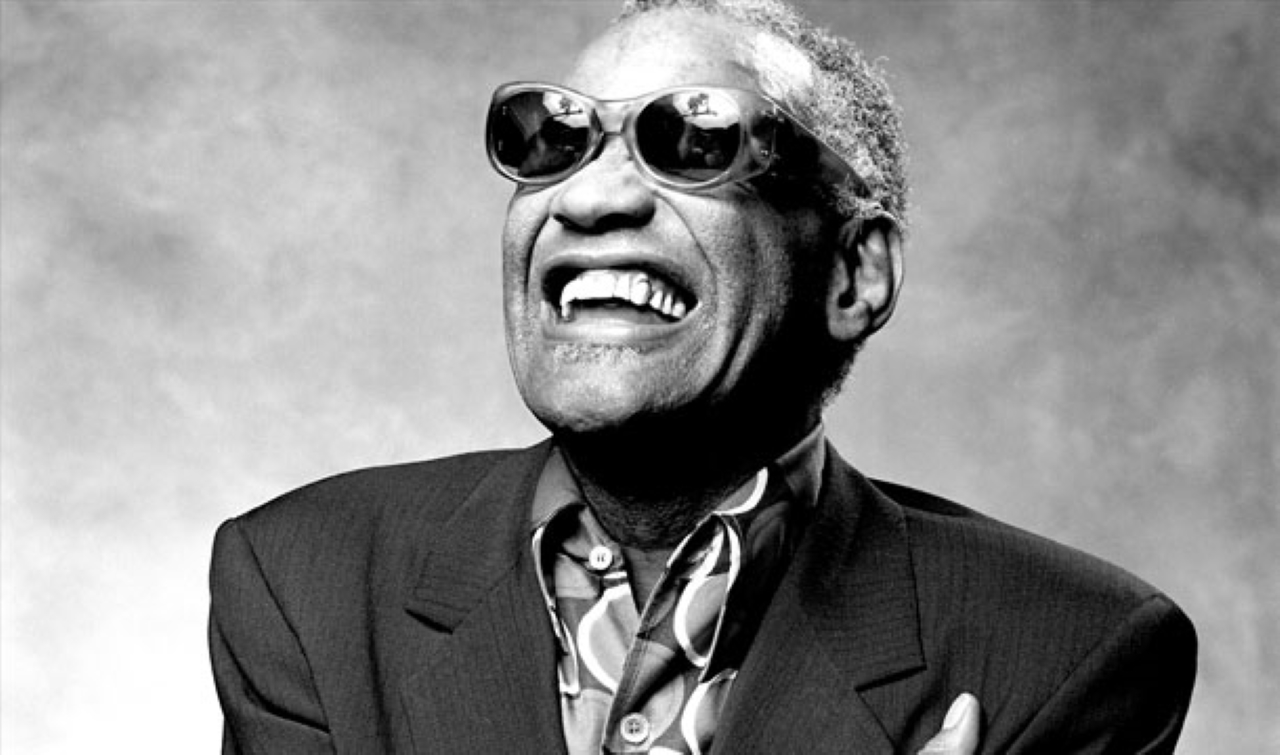Early Life – A Boy Who Saw the World in Sound
Ray Charles Robinson was born on September 23, 1930, in Albany, Georgia, into a world that was harsh and unforgiving. Growing up in extreme poverty, he faced hardships few children could endure. His father left early, and his mother, Aretha Robinson, raised him and his younger brother George with determination and grit.
At age five, tragedy struck when Ray witnessed his brother drown in a laundry tub — an image that haunted him for life. Soon after, he began to lose his sight due to glaucoma. By the age of seven, he was completely blind. Many would have been defeated by such a fate, but Ray was different. Where others saw darkness, he heard music.
His mother sent him to the Florida School for the Deaf and the Blind, where he learned to read and write music in Braille. He mastered piano, organ, saxophone, and clarinet, developing not just technical skill but also a deep understanding of how sound could be shaped into emotion. The boy who lost his sight found a vision through music.

Finding His Sound – From Clubs to First Recordings
As a teenager, Ray left school after his mother’s death, determined to make a living through music. He traveled from city to city, playing in small clubs, absorbing the sounds of jazz, blues, gospel, and country.
By the late 1940s, he had moved to Seattle, where his career began to take shape. His first recordings echoed the smooth style of Nat King Cole, one of his idols. Songs like “Confession Blues” (1949) gave him regional recognition, but Ray knew imitation wasn’t enough. He needed his own voice.
That voice came when he fused gospel passion with the raw emotion of blues and the rhythmic drive of jazz. What many considered controversial — “church music with secular lyrics” — became Ray’s signature. This blend would revolutionize American music.
The Birth of Soul – A New Musical Language
In 1954, Ray Charles recorded “I Got a Woman.” It was explosive, unlike anything on the radio. The song combined gospel-style vocals with rhythm and blues instrumentation. It shocked traditionalists but electrified audiences. With this single, Ray essentially invented soul music.
Over the next decade, he refined this new sound with hits like “What’d I Say” (1959), a call-and-response masterpiece that had people dancing across America. His piano grooves, gritty voice, and emotional delivery turned every performance into an act of revelation.
Ray wasn’t just making music; he was giving voice to an entire cultural moment. In a country divided by race, his songs crossed boundaries. Black and white audiences alike found themselves united by his sound.
Crossing Genres – No Boundaries in Music
Ray Charles hated being boxed into one genre. In the early 1960s, he shocked the music industry by recording “Modern Sounds in Country and Western Music” (1962). Critics were skeptical — a Black soul singer taking on country classics? But the album was a triumph, producing hits like “I Can’t Stop Loving You.”
The record didn’t just expand Ray’s career; it changed music history. It proved that genres were artificial walls and that great songs transcended boundaries. Country, blues, gospel, jazz — Ray could do it all. He opened the door for countless artists to experiment and blend styles without fear.
Struggles and Triumphs
Behind the success, Ray battled personal demons. He struggled with heroin addiction for nearly two decades, a fight that nearly destroyed him. Yet, in 1965, after multiple arrests, he entered rehabilitation and overcame his dependency. His resilience in the face of addiction mirrored the resilience he had shown since childhood.
He also faced challenges as a Black artist during the civil rights era. When Georgia insisted on segregating audiences, Ray refused to perform. The state later made amends by adopting his rendition of “Georgia on My Mind” as its official state song. The boy who grew up poor and blind in the South had become Georgia’s proudest voice.
Global Fame – The Genius Recognized
By the 1970s and 1980s, Ray Charles was more than a star — he was a legend. His music spanned decades and styles, earning him the nickname “The Genius.” He became a symbol of American creativity, admired by presidents, world leaders, and fellow musicians alike.
He performed at the White House, collaborated with artists from Frank Sinatra to Willie Nelson, and influenced generations from Stevie Wonder to Billy Joel. His voice, gravelly yet tender, could make a love song ache and a gospel song soar.
Later Years – Honors and Legacy
Ray never slowed down. Even in his later years, he toured relentlessly, always eager to share his gift. In 1986, he was among the very first inductees into the Rock and Roll Hall of Fame. He won 17 Grammy Awards, including a Lifetime Achievement Award.
In 2004, Ray passed away at age 73, leaving behind a catalog of over 60 albums and countless songs that reshaped modern music. That same year, the film Ray, starring Jamie Foxx, introduced his story to a new generation. Foxx’s Oscar-winning performance captured the pain and brilliance of a man who turned hardship into art.
🎶 A Song to Remember – “Georgia on My Mind”
Though Ray Charles gave the world dozens of timeless songs, “Georgia on My Mind” remains his signature piece. Originally written in 1930, Ray’s 1960 rendition transformed it into a soulful, haunting ballad. In 1979, the state of Georgia declared it their official state song, forever tying Ray to his Southern roots.
Every note of the song carries his life story: the struggles, the longing, the pride. When Ray sang “Georgia, Georgia, the whole day through,” it wasn’t just about a place — it was about memory, resilience, and love.